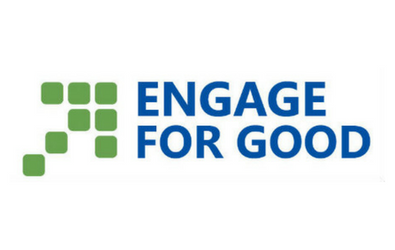Last week, I had the privilege of attending Engage for Good, an annual cause marketing forum conference that brings together nonprofit and for-profit professionals to share best practices and innovative ideas for using business as a force to creating meaningful societal change. This year, presenters and panelists reflected on the Corporate Social Responsibility industry’s evolution from transactional campaigns to transformational initiatives that engage consumers, employees and causes. The key message I took away: be an authentic storyteller.
Here are three lessons illustrated by campaigns shared during the conference that reinforce the importance of messaging:
1. To create meaningful change, messaging must be authentic to consumers, staff and the public at large.
Through storytelling, organizations can create powerful narratives in which people can understand how they can become change-makers in their own communities, break down stigmas and inspire others.
Dave’s Killer Bread is an organic sliced bread company based in Portland, Oregon. Going beyond baking bread, the company believes that everyone is capable of greatness and creating lasting change in the community. Walking its talk, the company works to hire individuals, like its co-founder Dave Dahl, who have criminal backgrounds and need access to employment opportunities in order to change their lives and become productive members of society. The challenge through the company’s messaging is to break down the stigma that criminals are bad people who don’t contribute to the community. To convey the importance of the company’s mission, Dave’s Killer Bread built its Second Chances micro-site where employees share their experiences and how employment with the company has helped them to transform their lives. Stories from the mico-site were shared across social media, with the tagline “buy a loaf, change a life,” and earned the company national media attention. The consumer response to the campaign has been killer (pun intended). From 2016 to 2017, Breadhead Nation grew by 50 percent and other companies are starting to follow suit by hiring more employees with criminal backgrounds.
2. A picture (or video) is worth way more than 1,000 words.
Photos and videos are powerful tools to show and tell the mission, message and work of your organization in an authentic and relatable way for and with consumers to activate change.
In 2016, the Walt Disney Company launched the #DreamBigPrincess photography campaign, which celebrates inspiring stories from around the world to encourage kids everywhere to dream big. Disney collaborated with international photographers to create a series of empowering images showcasing real-world girls and women mirroring powerful moments depicted by Disney princesses in movies to inspire young girls to overcome obstacles and achieve their own dreams. For every like and post on #DreamBigPrincess photos on Instagram, Facebook and Twitter, the company donated $1 to help support girls around the world. The campaign, which launched in 43 countries and ended on International Day of the Girl (Oct. 11), raised more than $1 million for the United Nations Foundation’s Girl Up campaign to support Girl Up’s leadership development programming for girls around the world. At its wrap, photos from the campaign were exhibited at the United Nations.
3. Hashtags can be an integral part of your communications campaign strategy.
A fresh idea coupled with an existing widely used hashtag can unite competitors and launch a nationwide effort to achieve a singular mission.
No Kid Hungry is the only national organization with a singular focus to end childhood hunger in America. In 2008, the nonprofit launched Dine Out For No Kid Hungry, a national restaurant campaign that raises critical funds and awareness to end child food insecurity through year-round activations with nearly 200 brands, representing more than 15,000 restaurants. Last year, to amplify its message the nonprofit redefined #hangry, wrapped a school bus with the humorous hashtag and went on a nationwide tour. Now, people aren’t #hangry because they are angry they are hungry. Rather, they are #hangry because their neighborhood kids don’t have food to eat and because we have so much food that goes to waste that could be used to feed the hungry. On Aug. 21, 2017, the #hangry bus traveled coast to coast, hitting nine cities in four weeks and reaching more than 10,000 people at activation events with the help of 15 restaurant partners, including Arby’s and Habit Burger, who came out with catering trucks, media partners and restaurant guests. Throughout the tour, restaurant partner staff members and guests, schools and communities at large shared testimonials for why they are #hangry. The results of the hashtag campaign speak for themselves: more than 272 videos were recorded and shared, 29,000 visited the campaign micro-site, 38,000 shared #hangry posts which generated 284 impressions and reached 92 million followers, 10 national major national media outlets covered the campaign, and 22 celebrities and chefs lent their voices to the cause. To date, Dine Out for No Kid Hungry has raised more than $58 million to get kids the meals they need, every day.


